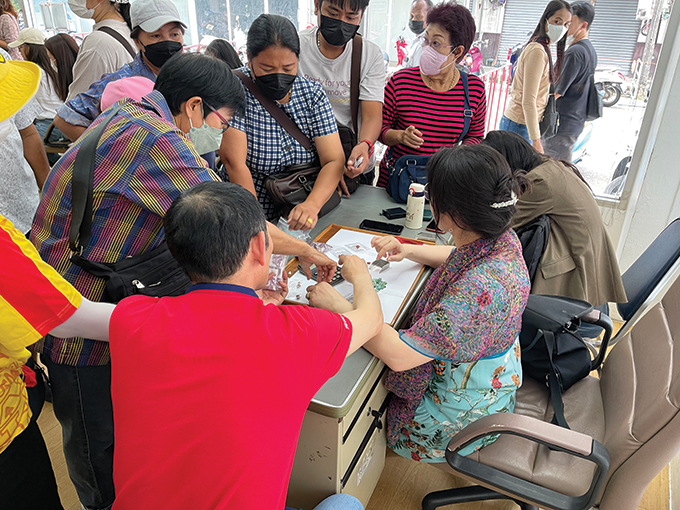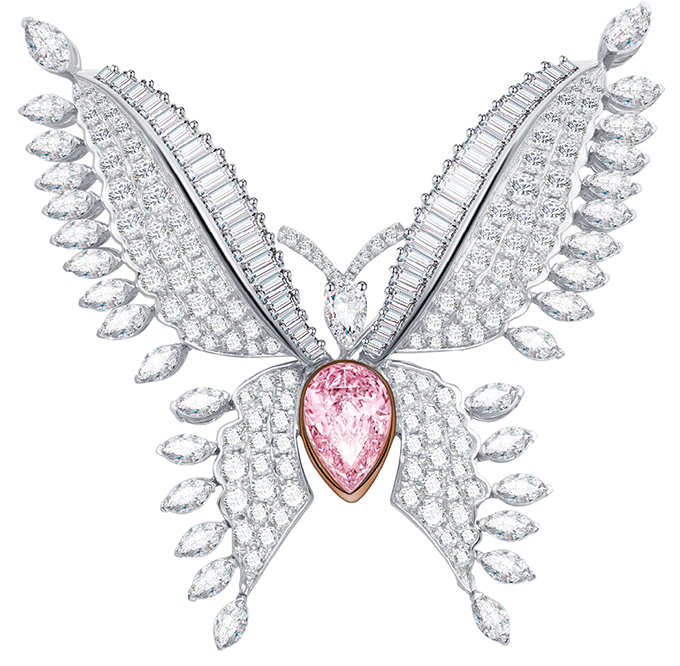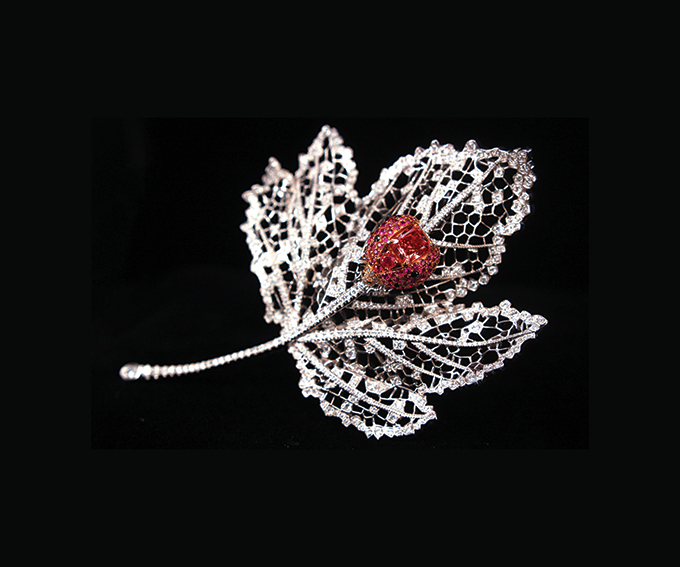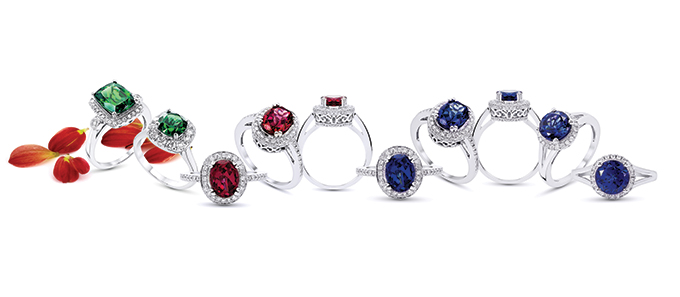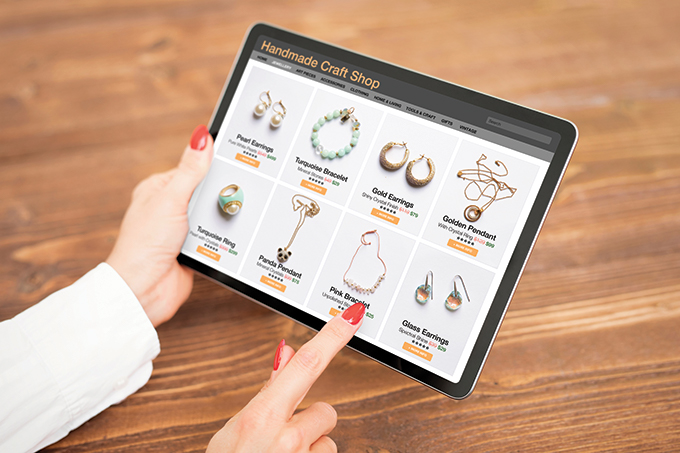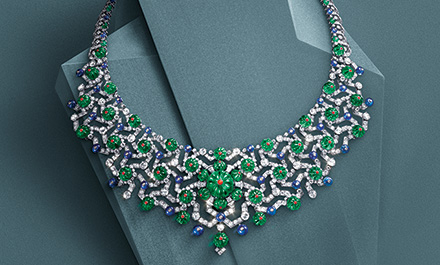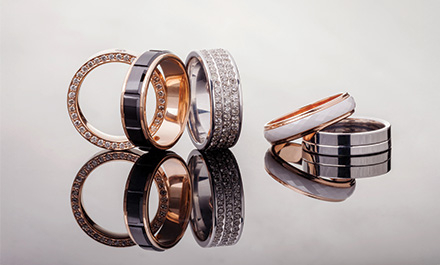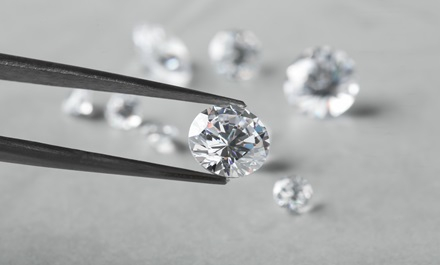A profound shift in consumer preferences, business channels and growth strategies are reshaping the landscape of China’s jewellery and gemstone sector as the country pushes forward in the wake of the Covid pandemic.
This article first appeared in the JNA July/August 2023 issue.
China’s economy is clearly on the mend after the damaging effects of Covid-19 but some aspects of trade and commerce, especially in the jewellery industry, seem forever changed. According to industry players, recurring outbreaks – the most devastating of which occurred in 2022 – coupled with restrictive Covid measures had indirectly ushered in a new business normal.
For instance, a prevailing buyer sentiment characterised by high savings and low spending remains evident in major sectors of the jewellery trade, particularly in the bridal market. Online shopping, meanwhile, has become even more mainstream.
Stone Xu, chairman of China-based diamond jewellery retailer Zbird, explained, “As a result of the Covid-19 outbreak in 2022, the proportion of online purchases soared significantly, with the advent of livestreaming and the ever-increasing number of consumers buying goods through this channel.”
Product preferences have likewise changed. Rings remain a must-purchase in the bridal jewellery market, but businesses are seeing a shift in consumer choices for everyday jewellery. Buyers are gravitating towards colourful pieces that celebrate individuality hence stronger demand for coloured gemstone products, traditionally crafted gold jewellery and enamel jewellery. According to Xu, coloured gemstones is a popular livestreaming category.
Meanwhile, many diamond retailers are expanding their product offerings to include coloured gemstones based on rising market demand. Coloured gemstones also provide greater diversity and higher margins and can cater to buyers with different budgets.
Xu added that majority of consumers in China directly associate diamonds with love and wedding rings, so they believe one diamond is enough to last them a lifetime. However, as consumers’ spending power and desire to wear jewellery daily increases, coloured gemstones are gradually coming to light as a top consumer choice.
Some coloured gemstone categories have had a strong following in China for quite a while, including quartz and chalcedony as well as jadeite and nephrite. Now, the so-called Big Three in the gemstone world – ruby, sapphire, emerald – are gaining more traction. Another well-loved category is pearl jewellery, which has been much favoured since ancient times.
Consumer education on coloured gemstones has also improved over the years. Consumers buy coloured gemstones for investment and collection purposes, and for everyday wear. With the rise of online sales and livestreaming businesses, commercial-grade coloured gemstones rose in popularity among consumers, and these include spinel, tourmaline, chrysoberyl, opal, tanzanite, topaz, moonstone and chalcedony, to name a few.
Cautious buying
Retailers remarked that diamond demand remains lower than pre-Covid levels, adding that a significant drop in prices since last year heavily affected decisions of diamond dealers and retailers when rebuilding inventories.
Wu Peng, general manager of Jinghua Jewellery, said several large retailers who used to source diamonds in large quantities monthly would now make purchases once every two or three months. Some retailers even launched a price bidding system among their suppliers.
Jinghua Jewellery, which operates 23 stores in Qingdao, Shandong province, is part of the Jinghua Group, one of the first members and shareholders of the Shanghai Diamond Exchange (SDE).
According to Lydia Geng, president of diamond wholesaler and SDE member Huabi (HB) Diamond, recent buying activities revealed that diamonds of 0.005 to 0.02 carat and 0.03 to 0.07 carat, bearing G to H colours and SI clarity grades are highly sought after, with considerable price increases. These categories are suitable for the manufacturing of lower-priced diamond jewellery that are mostly sold online. Melee diamonds are also used in high-end jewellery.
“We have observed increased inventory buying for diamonds below 1 carat while demand for over 1-carat diamonds is relatively slow,” Geng added.
Chen Zuwei, president of fancy colour diamond specialist Rosy Clouds Colored Diamonds, meanwhile observed that demand for top-quality, investment-grade fancy colour diamonds has witnessed a resurgence after the pandemic, backed by restored confidence among wealthy consumers.
Zuwei explained, “The fancy colour diamond market in China is still developing. Blue and yellow diamonds are popular while Argyle pinks and even reds are attracting considerable attention.”
New channels
Consignment sales for livestreaming is a rising phenomenon in China’s jewellery trade. Retailers would borrow goods from suppliers and show these to consumers via livestreaming sessions. Any purchase could immediately be carried out but will only be completed once full payment is received. This form of sales usually applies to lower-priced jewellery pieces.
Close-outs have also become a reliable source of goods for buyers, specifically those who are adept at sorting and evaluating jewellery pieces. The purchase of close-out items is considered a smart and practical move amid massive shutdowns of jewellery retail stores during and even after the pandemic.
The goods are often mixed, ranging from loose diamonds of various sizes, shapes and grades to plain or gemstone-studded jewellery pieces. Since close-out items are usually not best-sellers, buyers face the challenge of getting creative and selling them at a profit either as a finished jewellery piece or perhaps taking out the centre stone and recutting it, or getting it certified. They also have the option to sell the loose stone or reset it.
With the resumption of international travel, buyers are expected to start purchasing second-hand and estate goods from Japan again. Buying recycled diamonds to recut to 3EX diamonds has likewise become a successful venture for small-scale diamond cutting workshops in China.
Face-to-face business
The return of in-person trade events and exhibitions is seen to further aid buyers in reigniting their businesses. Physical shows are where they discover new products, trends and services, meet with existing and potential suppliers, and close deals. Another important function of trade fairs is testing and establishing new price levels.
Hong Kong shows held in March this year saw the return of Chinese B2B buyers to the international market. This however did not translate to actual sales, according to exhibitors, as Chinese buyers were not too accepting of existing high prices of goods.
The maiden edition of Informa Markets’ Jewellery & Gem ASEAN Bangkok (JGAB) in April 2023, meanwhile, witnessed more buying activity with the slight softening of prices. Buyers attending JGAB also seized an opportunity to buy from the source at the renowned gemstone market of Chanthaburi in Thailand.
Industry players in China said travel challenges hindered in-person business with overseas suppliers as flights between China and other countries, the US in particular, had yet to resume completely.
At press time, Chinese and American airlines operated 24 direct flights per week between China and the US, compared to dozens of daily direct flights pre-pandemic. Fewer flights also mean pricier airfare. “Therefore, we do not see the full numbers of foreign suppliers coming to China yet as it is still expensive to travel abroad,” said Geng of Huabi Diamond.
Travelling to India, on the other hand, also remains challenging due to hurdles in visa applications.
Industry players however remain upbeat about solid market recovery, with Chinese jewellers at the ready to fulfill rising demand. “While the online communication channels that we have adopted during the pandemic remain effective, face-to-face meetings and product viewings remain invaluable to our business. We are happy that these are back. There is huge demand that needs to be fulfilled,” shared Chen of Rosy Clouds Colored Diamonds.




